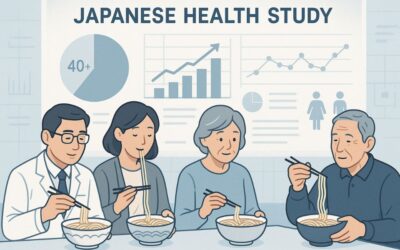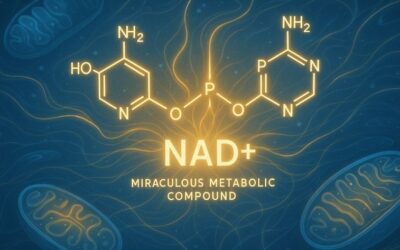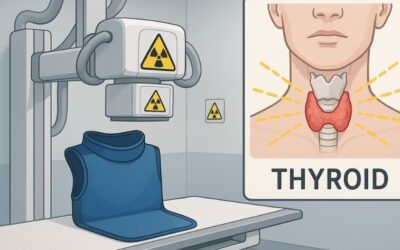When most women think of “breast health,” their mind goes to mammograms, ultrasounds, or self-exams. While screening has its place, true breast health starts years before anything shows up on an imaging scan—and it’s shaped by what’s happening inside your body every single day.
Your breasts are hormonally sensitive organs, deeply connected to your thyroid, liver, lymphatic system, and nutrient reserves. If those systems are out of balance, breast tissue is often one of the first places you’ll notice changes—whether it’s tenderness, cysts, or unexplained swelling.
This is where root-cause prevention changes the game. Let’s explore symptoms to watch for, the hidden triggers behind breast issues, and the supplement + lifestyle plan that can help you protect your breast health naturally.
Introduction to Breast Wellness

True breast wellness is about nurturing a healthy balance within the body—balancing hormones, supporting immune resilience, and fueling the body with nutrient-rich foods.
Research consistently shows that breast health is deeply intertwined with overall well-being, and that the choices women make every day can significantly influence their breast cancer risk.
For pregnant and postpartum women, prioritizing breast health is especially important, as hormonal shifts and increased nutritional demands can impact both mother and baby. Supporting postpartum breast health and maintaining breast microbiome health during this time can promote overall wellness, optimal milk production, and help reduce inflammation. Supporting breast health and optimal nutrition during this period also helps your baby thrive by fostering early brain development, digestion, and overall well-being, and supports both breast health and baby’s brain development during pregnancy and lactation.
By making informed lifestyle choices and seeking targeted support, women can lay the foundation for lifelong breast wellness, reduce the risk of breast cancer, and support their bodies through every stage of life.
Symptoms That Signal Possible Breast Discomfort or Issues
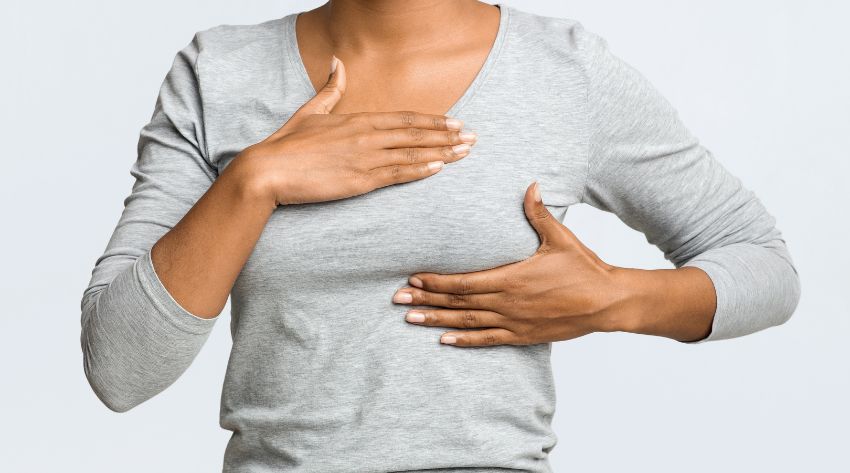
While not every change means something serious, ignoring your body’s “check engine” lights can allow imbalances to worsen. Here’s what to look for:
- Persistent tenderness or swelling — Common with PMS but can indicate hormonal imbalance or iodine deficiency.
- Fibrocystic texture — Rope-like or lumpy tissue, often linked to estrogen dominance or sluggish detox pathways.
- Nipple discharge — Especially if it’s bloody, green, or clear and not tied to breastfeeding.
- Visible skin changes — Redness, dimpling, itching, or rash over breast tissue.
- Size or shape changes — Not related to menstrual cycle or weight fluctuation.
- Pain in underarm or collarbone area — Could indicate lymphatic congestion.
- Breast pain — Especially common for nursing mothers; targeted probiotics and dietary supplements, such as those containing Lactobacillus fermentum CECT5716, can help ease breast pain and support a healthy balance of breast and gut bacteria.
Catching these signs early means you can intervene naturally—instead of waiting for a diagnosis.
The Hidden Culprits Behind Breast Problems
When it comes to breast health, most women think about mammograms, bras, and maybe diet — but few realize how deeply breast tissue health is tied to hormone balance, liver function, and even what’s in your water. The most common hormonal imbalance affecting breast tissue is estrogen dominance — a state where estrogen is either too high relative to progesterone or it’s not being detoxified efficiently.
Estrogen dominance can drive everything from breast tenderness to fibrocystic changes, and over time it creates an environment where abnormal cells can grow more easily. The following are the often-overlooked triggers that set the stage for these breast health problems.
Iodine Deficiency
Breast tissue is loaded with iodine receptors — second only to the thyroid. This isn’t random. Iodine is essential for:
- Regulating cell growth → helping prevent abnormal cell proliferation in breast tissue.
- Detoxifying halogens → like bromine, fluoride, and chlorine, which compete with iodine and disrupt hormone signaling.
- Antioxidant protection → iodine neutralizes free radicals that can damage breast tissue DNA.
- Maintaining breast architecture → iodine keeps tissue soft and healthy, reducing cyst formation.
When you’re iodine deficient:
- Estrogen sensitivity skyrockets — even “normal” estrogen levels can overstimulate breast cells.
- Fibrocystic breast disease risk rises — lumps, tenderness, and cysts become more common.
- Cellular detox slows down — toxins, heavy metals, and estrogens accumulate in breast tissue.
- Fatty liver risk increases — without iodine, fat builds up in the liver, slowing estrogen clearance and feeding estrogen dominance.
Estrogen Dominance
Modern life strips iodine from the body. We drink fluoridated water, eat brominated bread, swim in chlorinated pools, and avoid iodine-rich foods. On top of that, women naturally have higher iodine demands due to breast tissue volume and cyclical hormonal changes. Dr. David Brownstein’s research found 96% of Americans are severely deficient in iodine.
Estrogen dominance isn’t just “too much estrogen.” It’s often:
- Too little progesterone → which balances estrogen and protects breast tissue.
- Poor estrogen clearance → meaning estrogen stays in circulation far longer than it should.
When estrogen isn’t broken down properly:
- It recirculates through the bloodstream, repeatedly binding to breast tissue.
- It overstimulates cell growth, including potentially abnormal cells.
- It worsens PMS symptoms like tenderness, swelling, and mood swings.
Top contributors to estrogen dominance that impact breast health:
- Chronic stress → raises cortisol, which steals progesterone and slows estrogen detox.
- Xeno estrogen exposure → plastics (BPA, BPS, BPF), pesticides, herbicides, cosmetics with parabens, and conventional meat/dairy with implanted synthetic hormones.
- Tap water estrogen contamination → birth control and hormone therapy residues pass through wastewater treatment and into our drinking supply.
- Sugar & refined carbs → rob the body of minerals needed for hormone balance and spike estrogen.
- Pesticides & herbicides → many contain xenoestrogens that mimic estrogen in the body.
- Belly fat & aromatase activity → fat tissue converts testosterone into estrogen and stores harmful estrogen metabolites, creating a vicious cycle.
- Soy → especially GMO soy, acts as a plant estrogen, further increasing estrogen load.
- Gut dysbiosis and a compromised estrobolome → when gut bacteria that break down estrogen are disrupted, estrogen meant for elimination gets reabsorbed into the bloodstream.
Sluggish Liver
Your liver is the estrogen clearance hub of your body. It’s where Phase 1, Phase 2, and Phase 3 estrogen detoxification happen. If the liver is overloaded or “dirty,” estrogen clearance slows, and toxic metabolites build up in fat-rich tissues — including the breasts.
When the liver is sluggish:
- Estrogen and its byproducts accumulate → feeding estrogen dominance and overstimulating breast tissue.
- Fat-soluble toxins lodge in breast fat → including pesticides, heavy metals, and synthetic hormones.
- Inflammation and oxidative stress increase → creating a less hospitable environment for healthy breast cells.
What slows your liver’s ability to protect your breasts:
- High toxin load → seed oils, processed foods, alcohol, medications, synthetic hormones, environmental chemicals.
- Sulfur/oxalate-heavy supplements → such as certain forms of glutathione, turmeric, or NAC, which may back up detox pathways in sensitive individuals.
- Poor bile flow → bile is how estrogen metabolites leave the body; sluggish gallbladder function traps them inside.
- Stress hormones like cortisol → impair liver function and slow estrogen clearance.
Gut Health & Estrogen Recycling
Even if your liver does its job, estrogen still has to pass through the gut to leave the body. This is where the estrobolome — your estrogen-detoxifying gut microbiome — comes in.
When gut health is compromised:
- Beta-glucuronidase enzymes rise → allowing “detoxed” estrogen to escape and re-enter circulation.
- Estrogen reabsorption increases → giving breast tissue another wave of hormonal stimulation.
- Leaky gut → toxins and undigested particles slip into the bloodstream, triggering inflammation that worsens estrogen dominance.
Antibiotics, poor diet, chronic stress, and environmental toxins can all damage the estrobolome, making gut health a major breast health factor. A breastfeeding probiotic is a specialized probiotic supplement formulated for breastfeeding mothers, supporting breast health, preventing mastitis, and promoting a healthy microbiome for both mother and infant during lactation. Incorporating gut supporting probiotics can help maintain a healthy estrobolome, supporting both gut and breast health.
Environmental & Lifestyle Triggers
These daily exposures silently feed estrogen dominance and breast tissue stress:
- Plastics → bottles, food containers, and wraps leach hormone-disrupting chemicals.
- Parabens → in shampoos, lotions, and cosmetics mimic estrogen in the body.
- Improper food combining → such as proteins with starches (steak with potatoes), which impairs digestion and drives metabolic acidosis, increasing estrogen production.
- Overeating → overwhelms stomach function, leading to poor digestion, acidosis, and hormone imbalance.
Iodine deficiency, estrogen dominance, sluggish liver function, gut imbalances, and daily toxin exposureform a web of interconnected triggers that over time can compromise breast health.
The good news?
Each of these can be addressed with targeted detoxification, hormone balance strategies, and nutrient repletion — starting with iodine, liver support, and gut restoration.
The Role of Gut Health in Breast Wellness
A thriving gut microbiome is essential for optimal breast health. The community of beneficial microorganisms in the digestive system not only supports immune function and hormone balance, but also plays a direct role in maintaining a healthy breast microbiome. When the gut is in balance, it helps regulate estrogen metabolism, reduces whole body inflammation, and supports the body’s natural defenses against breast cancer. Conversely, an unhealthy gut microbiome—known as dysbiosis—has been linked to increased breast cancer risk, breastfeeding discomfort, and issues like clogged ducts and mastitis.
Targeted breast probiotics, such as L. salivarius and L. fermentum, have been clinically studied for their ability to support healthy lactation, ease breast discomfort, and promote a healthy balance of protective breast bacteria. These clinically studied probiotics are backed by research demonstrating their safety and efficacy for maternal and infant health.
These beneficial probiotics can help prevent clogged ducts, support optimal milk flow, and reduce the risk of mastitis, making them especially valuable for breastfeeding moms and postpartum women. Additionally, a healthy gut microbiome is crucial for the absorption of key nutrients like vitamin D, which is vital for immune health and bone strength.
Emerging research also highlights the gut-brain axis—a powerful communication network between the gut and the brain—that influences not only mental clarity and mood, but also breast health through its effects on inflammation and estrogen metabolites. By supporting gut health with a balanced diet, premium grade organic prebiotics, and targeted probiotics, women can rebalance gut health, promote a healthy breast microbiome, and reduce their risk of breast cancer. Whether you are pregnant, postpartum, breastfeeding, or simply seeking to support breast health, nurturing your gut is a foundational step toward lifelong wellness.
Estrogen Metabolism and Breast Health
Estrogen metabolism is a cornerstone of breast health, influencing everything from breast cancer risk to healthy lactation. The way your body processes estrogen determines the types of estrogen metabolites produced—some of which are protective, while others may increase the risk of breast cancer. For example, research shows that higher levels of 2-hydroxyestrone (2-OHE) are associated with a lower breast cancer risk, while elevated 16α-hydroxyestrone (16α-OHE) can have the opposite effect. Achieving a healthy balance between these metabolites is essential for supporting breast health and reducing the risk of breast cancer.
By understanding and supporting your body’s estrogen metabolism, you can take proactive steps to protect your breast health, lower your breast cancer risk, and promote healthy lactation.
Lifestyle Factors and Breast Health
Your daily lifestyle choices have a profound impact on breast health, influencing everything from hormone balance to immune resilience. For pregnant and postpartum women, these choices are even more significant, as they affect not only your own well-being but also your baby’s brain development and digestive health.
A nutrient-rich diet filled with fruits and vegetables that don’t contain oxalates or sulfur provides the antioxidants and essential nutrients needed to support breast health and reduce breast cancer risk. Sufficient vitamin D is especially important for pregnant and postpartum women, as it supports bone health, immune function, and helps maintain a healthy gut microbiome. Prenatal supplements are also crucial for pregnant women to ensure comprehensive nutritional support and meet the increased demands of pregnancy. Staying hydrated and fueling your body with clean, whole foods can ease breast discomfort and promote a thriving gut, which is closely linked to both breast and digestive development.
Environmental factors also play a role. Avoiding unnecessary or harmful ingredients—such as artificial preservatives, fillers, and additives—can help support optimal gut health and reduce the risk of leaky gut that may contribute to breast discomfort. Regular exercise, maintaining a healthy weight, and managing stress are additional lifestyle habits that support breast health and lower breast cancer risk.
For breastfeeding moms, prioritizing your own health is one of the best ways to support your baby’s growth and development. The supplements mentioned below for breast health are designed to support women whether nursing, breastfeeding or pumping, providing targeted benefits for the breast microbiome and reducing inflammation. By making informed choices—like choosing premium, clean supplements formulated and endorsed by perinatal health experts and focusing on a balanced, nutrient-dense diet—you help ensure your baby’s brain and digestive system have the best possible start and support cognitive development.
Breast Health Action Plan to Support Breast Health
This is my targeted supplement + lifestyle protocol for improving breast tissue health, correcting iodine deficiency, and clearing estrogen dominance. The recommended products are the only supplements offering comprehensive, evidence-based support for breast health. They are manufactured to meet pediatric grade supplements standards, ensuring safety and quality for all ages.
Each batch undergoes an independent labs test to verify safety and efficacy. The manufacturing process includes strict contamination prevention measures, such as GMP certification and allergen segregation.
Acceleradine® Iodine (Oral support)
Acceleradine® Iodine stands out as a foundational supplement for women seeking to support breast health at every stage of life, especially during pregnancy and postpartum. Iodine is essential for maintaining the integrity of breast tissue and plays a pivotal role in reducing breast cancer risk. For pregnant and postpartum women, ensuring sufficient iodine intake is not only vital for their own breast health but also for promoting healthy lactation and supporting their baby’s development.
Iodine plays a vital role in apoptosis — the body’s natural process of programmed cell death that clears out unhealthy cells. This protective mechanism not only helps guard against cancer but also supports healthy tissue growth and development.
During pregnancy, apoptosis is happening at its highest rate, guiding the baby’s growth and ensuring only healthy cells thrive. Because of this increased demand, even the FDA acknowledges that women need 47% more iodine during pregnancy and nearly double (93% more) while breastfeeding to support both mom and baby.
As the only breast health supplement specifically formulated to deliver comprehensive, non toxic, bioavailable iodine support, Acceleradine® Iodine helps create an optimal environment for healthy lactation and resilient breast tissue. By addressing iodine needs proactively, women can take a powerful step toward preventing breast health issues and nurturing both their own well-being and that of their baby during this critical time.
Iodine may help to:
- Displace toxic halogens and heavy metals that block iodine receptors.
- Promote normal cell apoptosis (the “self-destruct” process for damaged cells).
- Reduce fibrocystic changes by regulating estrogen’s effects on breast tissue.
How it works: Unlike glycerin-based or non organic alcohol-based iodines, Acceleradine® Iodine contains no fillers or chemical residues—just pure iodine in 200 proof organic, non- GMO alcohol, scalar-enhanced for higher life-force energy. Learn more about the best iodine supplement.
Acceleradine® Iodine + Accelerated Scalar Castor Oil(Topical support)
While Acceleradine® Iodine and Accelerated Scalar Castor Oil are powerful tools for overall wellness, their most direct impact on breast health comes from their ability to support healthy lactation and provide relief from breastfeeding discomfort.
Topical application of castor oil, sometimes combined with iodine, has long been used to help ease clogged ducts and reduce the risk of mastitis—two common challenges for breastfeeding moms. By supporting lymphatic flow and soothing inflamed tissue, this approach can offer targeted comfort during periods of breast discomfort.
Breast tissue is dense. Direct application ensures localized delivery of iodine’s antioxidant and detox benefits.
Castor oil may help:
- Penetrate deep into tissues carrying iodine into lymph nodes and ducts.
- Enhance lymphatic drainage, reducing congestion and swelling.
- Reduce inflammation.
Application:
Mix a few drops of Acceleradine® Iodine into Accelerated Scalar Castor Oil and massage into the breast area 3–5x/week. Use with gentle circular motions toward the underarm to stimulate lymph flow.
Calcium D-Glucarate
The estrogen clearance specialist.
The ingredients in this supplement may help:
- Bind excess estrogen in the gut so it can’t be reabsorbed.
- Inhibit beta-glucuronidase, an enzyme from harmful gut bacteria that “unlocks” estrogen for recirculation.
- Support Phase II liver detox (glucuronidation), the pathway responsible for neutralizing hormone metabolites.
Why it matters for breast health: Keeps estrogen from overstimulating breast tissue and helps reverse estrogen dominance at the root.
Accelerated Liver Care®
The ultimate liver reset for hormone balance and breast health.
Your liver is your body’s estrogen traffic controller—responsible for packaging up excess hormones and sending them out of the body. When it’s sluggish, estrogen metabolites get backed up, recirculate, and overstimulate breast tissue.
Accelerated Liver Care® is formulated with a precise blend of organic herbs, nutrients, and scalar technology designed to help detox, regenerate, and strengthen your liver without the harsh side effects of aggressive cleanses.
Key Ingredients & How They Work:
- Kutti (Picrorhiza kurroa) – A powerful Ayurvedic liver tonic that may help reverse liver damage, reduce inflammation, and improve detox efficiency. Known for supporting recovery from fatty liver and toxic overload.
- Phyllanthus (Chanca Piedra) – Called the “stone breaker” for its ability to possibly dissolve and prevent gallstones and kidney stones, while enhancing bile flow for estrogen and toxin elimination.
- TUDCA (Tauroursodeoxycholic acid) – A bile acid that may promote healthy bile production, prevents bile stagnation, and supports liver cell repair—critical for clearing estrogen metabolites.
- Milk Thistle (Silybum marianum) – Rich in silymarin, a potent antioxidant that may shield liver cells from oxidative stress and promotes regeneration.
- Andrographis (Andrographis paniculata) – A bitter herb that may reduce liver inflammation, enhance immune function, and assist in detoxifying harmful compounds.
- Scute Root (Scutellaria baicalensis) – A potent anti-inflammatory and antioxidant herb that may protect liver tissue and support healthy detox pathways.
Breast Health Connection:
A healthy liver means excess estrogen is metabolized and removed efficiently—reducing breast tenderness, swelling, and fibrocystic changes. It also frees up the liver to process environmental toxins, halogens, and heavy metals that would otherwise store in breast tissue and disrupt hormonal balance.
Accelerated Scalar Copper™
Copper is an often-overlooked mineral that plays a crucial role in maintaining breast health, particularly for postpartum women and those undergoing treatment for breast health concerns. Copper is essential for supporting the structure and resilience of breast tissue, and it helps foster a healthy balance within the breast microbiome.
By encouraging the growth of protective breast bacteria, copper can help prevent common issues such as clogged ducts and mastitis, which are frequent sources of discomfort during lactation. Its powerful antioxidant properties also work to reduce whole body inflammation, supporting the body’s natural defenses and lowering the risk of breast cancer. For women navigating postpartum recovery or managing breast health challenges, Accelerated Scalar Copper™ offers targeted support to maintain healthy lactation, ease inflammation, and promote lasting breast wellness.
Copper supplementation health benefits:
- Essential for lysyl oxidase, an enzyme that cross-links collagen and elastin—keeping breast tissue firm and healthy.
- Works with iodine to protect against oxidative damage in estrogen-sensitive tissue.
- Critical for ceruloplasmin production, which regulates iron and reduces oxidative stress—a key factor in cancer prevention.
Modern farming depletes copper-rich soils, high zinc supplementation can block absorption, and processed diets strip natural copper sources.
Accelerated Cellular Detox Powder™
The ingredients in this daily detoxifier may help:
- Bind and remove heavy metals, halogens, pesticides, mold toxins, and plastics that can store in breast tissue and disrupt hormones.
- Safely escort toxins out through the gut—without harming healthy bacteria.
- Prevent enterohepatic recirculation (when toxins re-enter the bloodstream instead of being eliminated).
Breast health connection: By lowering your total toxin burden, you reduce inflammation in breast tissue, improve iodine uptake, and help the liver focus on hormone clearance instead of chemical defense. This is essential for reversing estrogen dominance and protecting breast tissue from oxidative stress.
Pro tip: Take Accelerated Cellular Detox Powder™ away from food and supplements to maximize binding power and avoid nutrient loss.
The Breast Health Diet
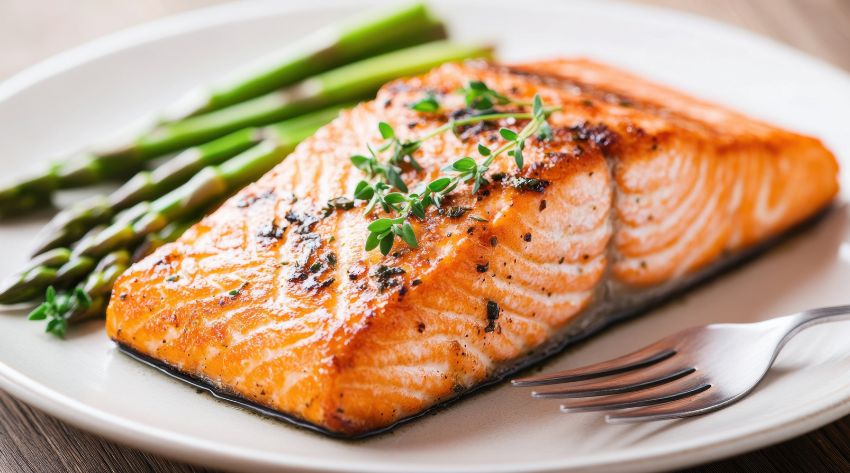
You can take the best supplements in the world, but if your diet is constantly feeding estrogen dominance, liver congestion, and inflammation, your breasts will feel the effects. The foods you choose every day can either fuel healthy breast tissue or silently work against you. A diet rich in prebiotic fiber fuels beneficial probiotics, supporting both gut and breast health.
Here’s how to eat for optimal breast health:
Prioritize Eating Wild Animal Protein
- Why it matters: Protein isn’t just for muscles—it’s the building block for hormones, enzymes, and detox pathways. Amino acids from high-quality animal protein help your liver process estrogen, build healthy breast tissue, and keep your metabolism strong.
- Best sources: Wild-caught fish, grass-fed beef, pasture-raised bison, elk, lamb, venison.
- Why “wild” is key: Factory-farmed meat often contains growth hormones, antibiotics, and inflammatory omega-6 fats that contribute to estrogen dominance and tissue inflammation. Wild and pasture-raised meats have higher nutrient density, cleaner fat profiles, and contain more zinc, selenium, and B vitamins—all critical for hormone balance.
Eliminate Oxalate Laden Foods From Your Diet
While oxalates are naturally occurring compounds found in many foods, their direct impact on breast health is still being explored. What is clear, however, is that supporting breast health goes beyond simply removing or reducing oxalates from the diet. The foundation of breast wellness lies in maintaining a healthy balance within the gut and breast microbiome. By focusing on a nutrient-rich diet, incorporating targeted breast probiotics and prebiotics, and supporting cognitive development, you can help create an environment that supports breast health and reduces the risk of breast cancer.
A thriving breast microbiome, supported by beneficial bacteria, is essential for protecting breast tissue and promoting overall well-being. Targeted breast probiotics help maintain this healthy balance, while prebiotics fuel the growth of these beneficial microorganisms. Together, they work to support breast health, optimize gut health, and provide a strong defense against environmental and dietary stressors. By prioritizing these strategies, you can take meaningful steps to support your breast health and overall vitality.
Eliminating oxalates from your diet is a strategic move for anyone looking to optimize breast health and support a thriving breastfeeding journey. Oxalates, found in certain plant foods like almonds, spinach, berries and kale, can contribute to inflammation and discomfort in breast tissue, leading to issues like breast pain, clogged ducts, and even persistent breastfeeding discomfort. By removing oxalates, you help create a healthier gut microbiome, which in turn supports a balanced breast microbiome—an essential factor in reducing breast cancer risk and promoting healthy lactation.
For breastfeeding moms, this dietary shift can ease breast discomfort, support milk flow, and make the entire breastfeeding experience more comfortable. Additionally, a healthy gut and breast microbiome are linked to better brain development and overall health for your baby, making oxalate removal a key step in supporting both maternal and infant well-being. Prioritizing a low-oxalate diet is a simple yet powerful way to ease breast discomfort, prevent clogged ducts, and foster a healthy start for both you and your baby.
- Why it matters: Oxalates are plant compounds that can build up in tissue, creating inflammation, pain, and calcifications—particularly in breasts and lymph nodes.
- Hidden sources: Spinach, almonds, beets, sweet potatoes, chia seeds, black beans, dark chocolate.
- Breast health connection: Oxalate crystals can lodge in breast tissue, contributing to discomfort, lumps, and fibrocystic changes. Removing them allows lymphatic flow to improve and tissue inflammation to drop.
Avoid Sulfur-Containing Foods (If Sulfur-Sensitive)
Some women have impaired sulfur metabolism due to sluggish liver pathways, mold exposure, or genetic factors (like CBS mutations).
- When sulfur backfires: Instead of detoxing, sulfur builds up as sulfites and ammonia, irritating tissues and slowing Phase II liver detox.
- Common high-sulfur foods: Garlic, onions, broccoli, cauliflower, cabbage, eggs, and cruciferous vegetables.
- For breast health: If you notice bloating, headaches, or breast tenderness after sulfur-rich meals, it may be a sign your liver needs support before you can handle these foods. Temporarily removing them can help estrogen clearance and tissue healing.
Stop Eating Processed Foods
Why it matters: Processed foods are a triple threat—loaded with inflammatory seed oils, refined sugars, and synthetic additives that stress the liver and disrupt hormones.
Poossible Breast health risks from these processed food:
- Seed oils (soybean, canola, sunflower, corn) are high in omega-6 fats, which drive inflammation in hormone-sensitive tissues.
- Refined sugars spike insulin, which fuels estrogen production and fat storage—both linked to breast health problems.
- Additives and dyes create extra work for the liver, leaving less capacity for estrogen clearance.
Focus on Detox-Supportive Foods
While avoiding certain foods is critical, adding the right foods is equally important.
- Low-oxalate, sulfur-friendly veggies: Zucchini, cucumber, lettuce, asparagus (if tolerated). See the Accelerated Food Guide for more options.
- Clean fats: Avocado, grass-fed butter, coconut oil, tallow, wild-caught fish.
- Electrolyte-rich salts: Accelerated Ancient Salt® supports iodine uptake, hydration, and adrenal function.
- Gut-friendly fiber: Helps bind and eliminate estrogen through the colon.
How This Diet Works for Breast Health
This way of eating:
- Reduces estrogenic stimulation of breast tissue.
- Decreases inflammation and oxidative stress in hormone-sensitive areas.
- Improves iodine uptake by removing halogen-containing processed foods.
- Frees up the liver and lymphatic system to focus on estrogen detox and tissue repair.
Lifestyle Hacks That Support Breast Health
- Lymphatic stimulation → Dry brushing, rebounding, and castor oil packs keep fluid moving so toxins don’t stagnate in breast tissue.
- Ditch aluminum-based deodorants → Let your underarm lymph nodes breathe and detox naturally.
- Infrared sauna therapy → Sweating is one of the most effective ways to offload stored toxins.
- Eat estrogen-clearing foods → Cruciferous vegetables, flax seeds, and sulfur-rich veggies (unless sulfur-sensitive) help metabolize estrogen.
- Clean up personal care → Switch to non-toxic skincare, shampoo, and laundry detergents to avoid xeno estrogens.
- Support your gut → A healthy microbiome helps break down and eliminate estrogen metabolites.
- Consider breastfeeding medicine → Probiotics and other interventions used in breastfeeding medicine can support breast health and help prevent issues like mastitis during lactation.
In Conclusion
Breast health isn’t just about catching problems—it’s about never letting them take root in the first place. By restoring iodine levels, balancing estrogen, and keeping your liver and lymphatic system flowing, you give your breasts the environment they need to stay healthy, resilient, and pain-free.
The synergy of Acceleradine® Iodine (oral + topical), Accelerated Scalar Castor Oil, Calcium D-Glucarate, Accelerated Liver Care®, Accelerated Scalar Copper™, and Accelerated Cellular Detox Powder™ targets the three biggest breast health disruptors: iodine deficiency, estrogen dominance, and sluggish detox pathways.
Sara Banta
Sara Banta is a Stanford University Graduate with a Degree in Economics and Psychology, and a certified Natural Supplement Expert & Graduate of the Institute for Integrative Nutrition. Sara is the Founder of Accelerated Health Products and host of the health & wellness podcast, Accelerated Health Radio.
- Sara Bantahttps://sarabantahealth.com/author/sarabanta/
- Sara Bantahttps://sarabantahealth.com/author/sarabanta/
- Sara Bantahttps://sarabantahealth.com/author/sarabanta/
- Sara Bantahttps://sarabantahealth.com/author/sarabanta/





